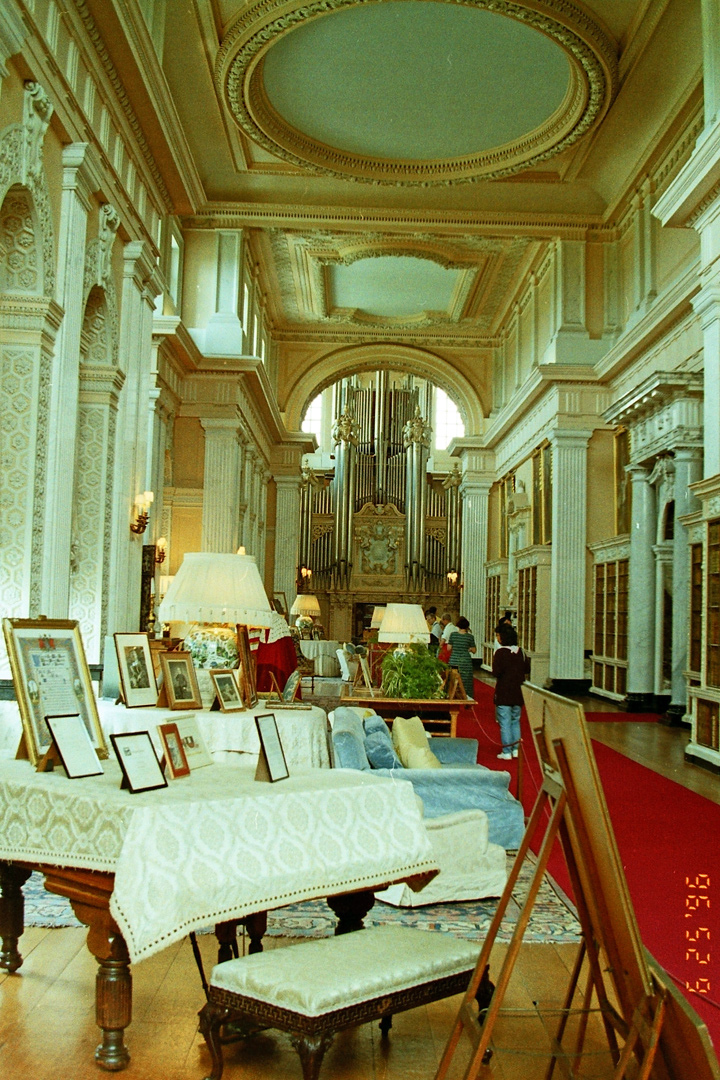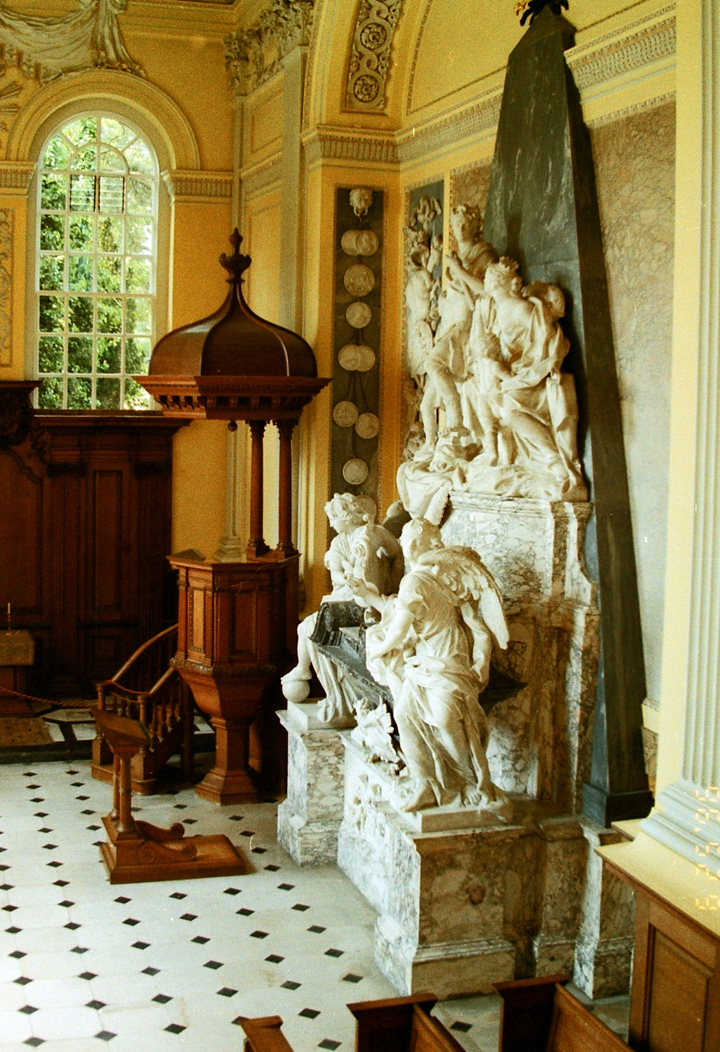

Blenheim Palace
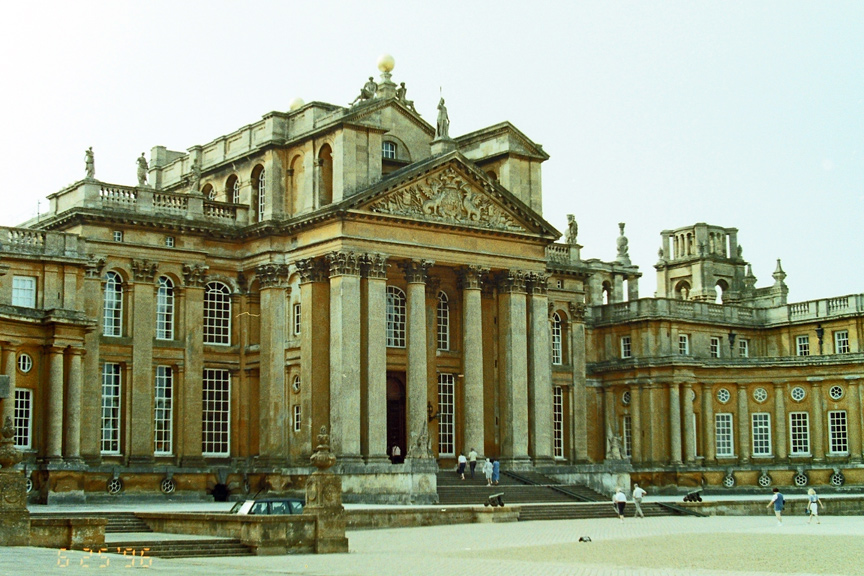
Blenheim sits in the centre of a large undulating park, a classic example of the English landscape garden movement and style. When Vanbrugh first cast his eyes over it in 1704 he immediately conceived a typically grandiose plan: through the park trickled the small River Glyme, and Vanbrugh envisaged this marshy brook traversed by the "finest bridge in Europe". Thus, ignoring the second opinion offered by Sir Christopher Wren, the marsh was channelled into three small canal-like streams and across it rose a bridge of huge proportions, so huge it was reported to contain some 30-odd rooms. While the bridge was indeed an amazing wonder, in this setting it appeared incongruous, causing Alexander Pope to comment: "the minnows, as under this vast arch they pass, murmur, 'how like whales we look, thanks to your Grace.'"
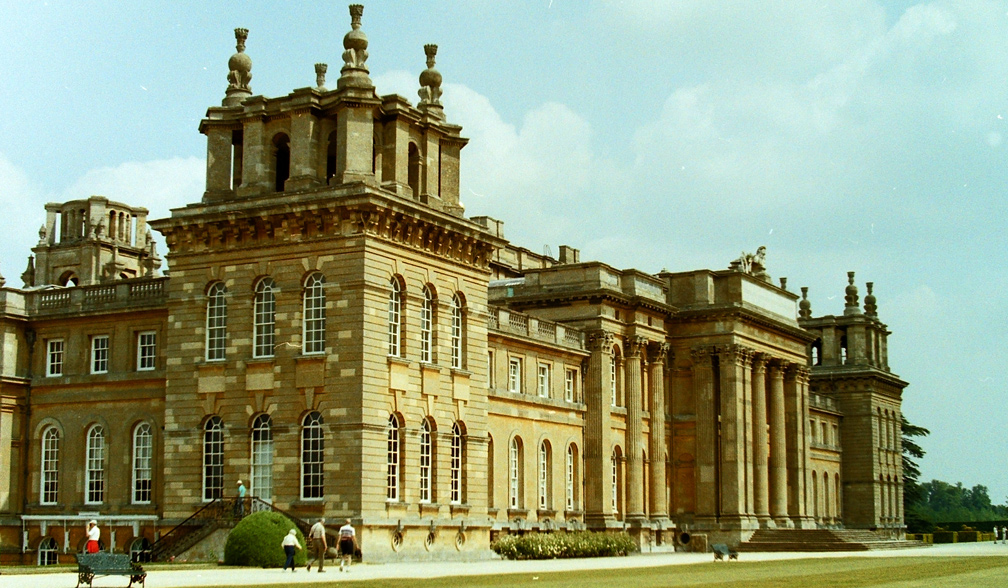
Horace Walpole saw it in 1760, shortly before Capability Brown's improvements:
"the bridge, like the beggars at the old duchess's gate, begs for a drop of
water and is refused." Another of Vanbrugh's schemes was the great parterre,
nearly half a mile long and as wide as the south front. Also in the park,
completed after the 1st Duke's death, is the Column of Victory. It is 134 ft (41
m) high and terminates a great avenue of elms leading to the palace, which were
planted in the positions of Marlborough's troops at the Battle of Blenheim.
Vanbrugh had wanted an obelisk to mark the site of the former royal manor, and
the trysts of Henry II which had taken place there, causing the 1st Duchess to
remark, "If there were obelisks to bee made of all what our Kings have done of
that sort, the countrey would bee stuffed with very odd things" (sic). The
obelisk was never realised.
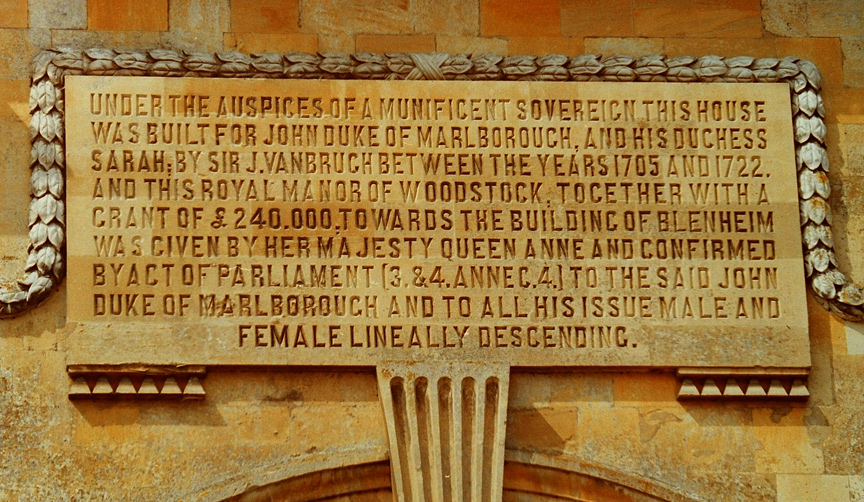
Following the 1st Duke's death the Duchess concentrated most of her considerable
energies on the completion of the palace itself, and the park remained
relatively unchanged until the arrival of Capability Brown in 1764. The 4th Duke
employed Brown who immediately began an English landscape garden scheme to
naturalise and enhance the landscape, with tree planting, and man-made
undulations. However, the feature with which he is forever associated is the
lake, a huge stretch of water created by damming the River Glyme and ornamented
by a series of cascades where the river flows in and out. The lake was narrowed
at the point of Vanbrugh's grand bridge, but the three small canal-like streams
trickling underneath it were completely absorbed by one river-like stretch.
Brown's great achievement at this point was to actually flood and submerge
beneath the water level the lower stories and rooms of the bridge itself, thus
reducing its incongruous height and achieving what is regarded by many as the
epitome of an English landscape. Brown also grassed over the great parterre and
the Great Court. The latter was re-paved by Duchene in the early 20th century.
The 5th Duke was responsible for several other garden follies and novelties such
as the swivelling boulder, which would suddenly roll across a path, to
supposedly thrill the walker.

Sir William Chambers, assisted by John Yenn, was responsible for the small
summerhouse known as "The Temple of Diana" down by the lake, where in 1908
Winston Churchill proposed to his future wife. However, the ornamental gardens
seen today close to the palace, the Italian and water gardens, are entirely the
design of Duchene and the 9th Duke.
Text from Wikipedia
Gardens

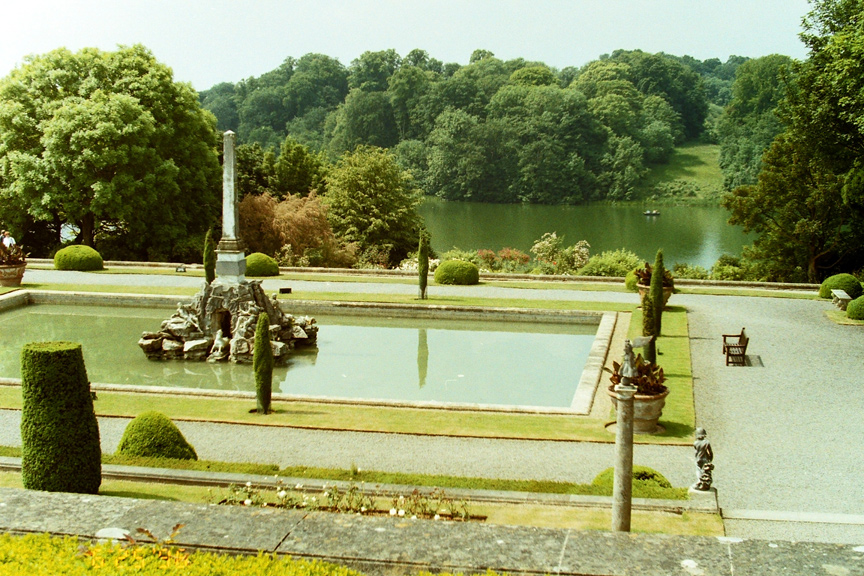
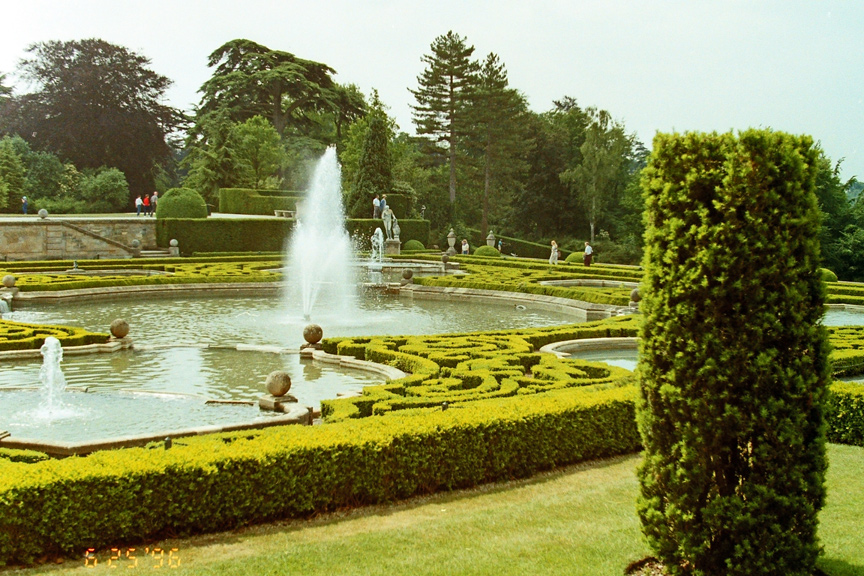

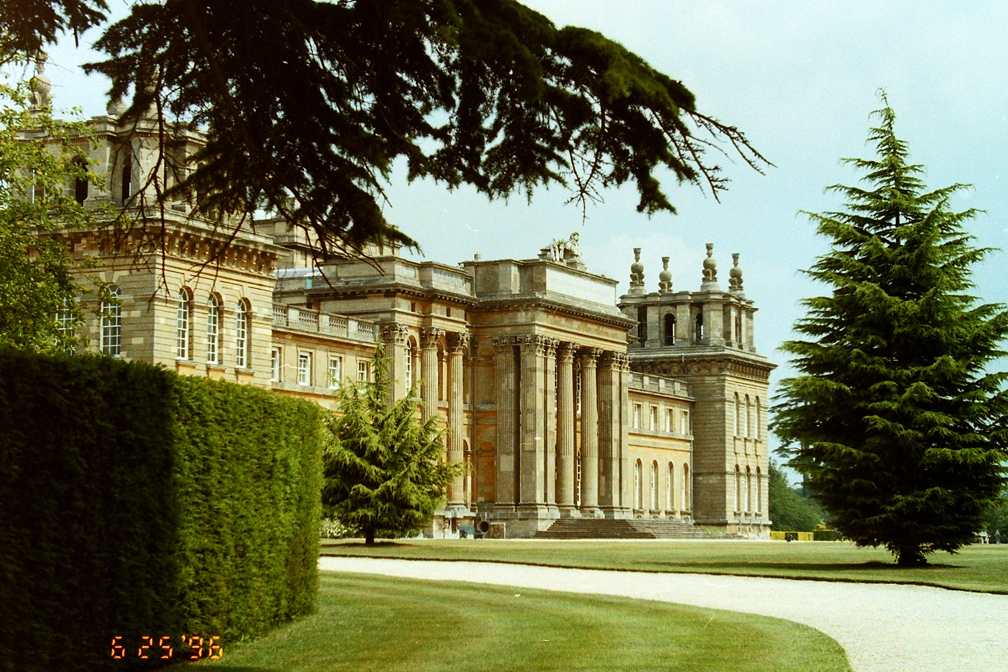
Interior


